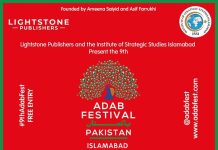“Rivers Divided-Indus Basin Waters in the Making of India and Pakistan” by Daniel Haines is an historic account of water politics in South Asia. Tracing the history of Indus basin, the writer feels that despite its shortcomings, the Indus Water Treaty (IWT) has become a symbol of cooperation between the two rival states. This is particularly true as the treaty has survived the wars between India and Pakistan.
According to the author, nationality and territory are deeply connected in modern South Asia thinking as is evident by the role played by the political organisations of the late nineteenth and early twentieth century namely the Indian National Congress, All India Muslim League and All India Hindu Mahasabha. For the Congress, nationalism was marked in metaphors only. The twentieth century political discourse deified the figure of Bharat Mata (Mother India) as personification of the nation. The Hindu ideologues also put forth a territorialised vision of Hindu-ness. This was evident from the title page of a pamphlet Hindutva written by Vinayak Damodar Savarkr. Muslims had a more diverse vision of territory as many of Muslim leaders worked for the Congress. During the late 1930s, Muslim leaders particularly Jinnah insisted that India was not a nation but a geographical space where two nations, Hindus and Muslims, lived. The writer then goes on to describe the events of the partition and mass dislocation of the people. He also describes in detail the accession of princely states particularly the state of Kashmir, which never allowed the boundary between the two countries to settle down.














